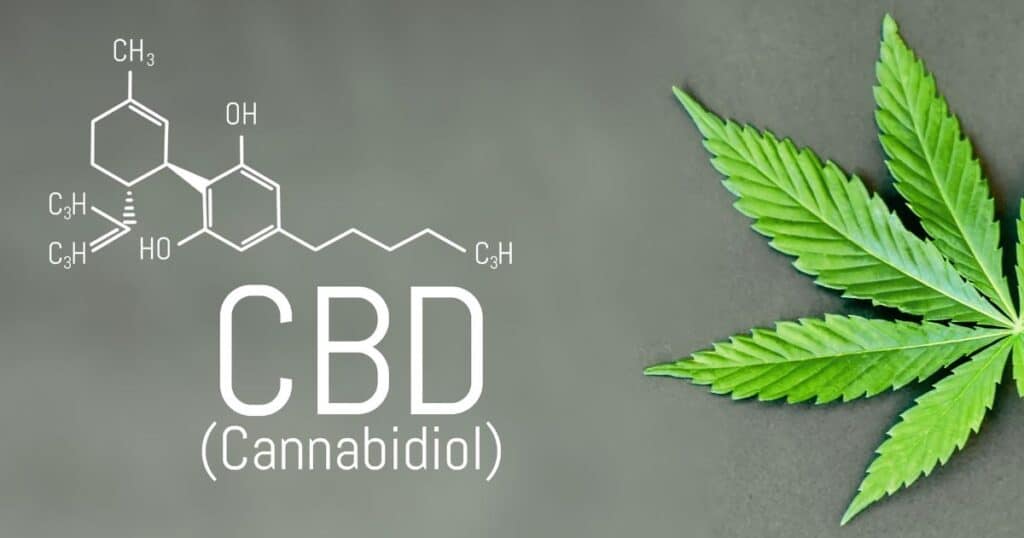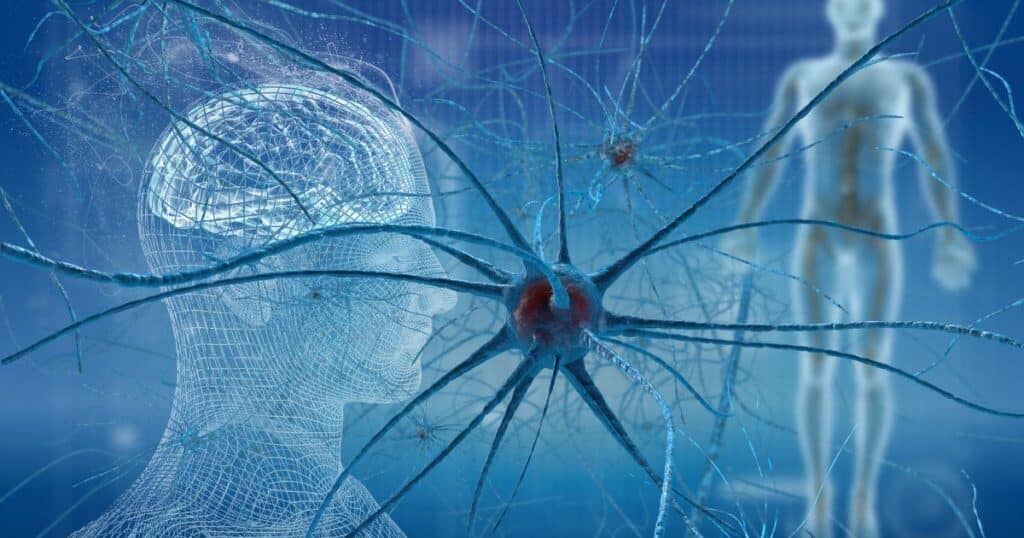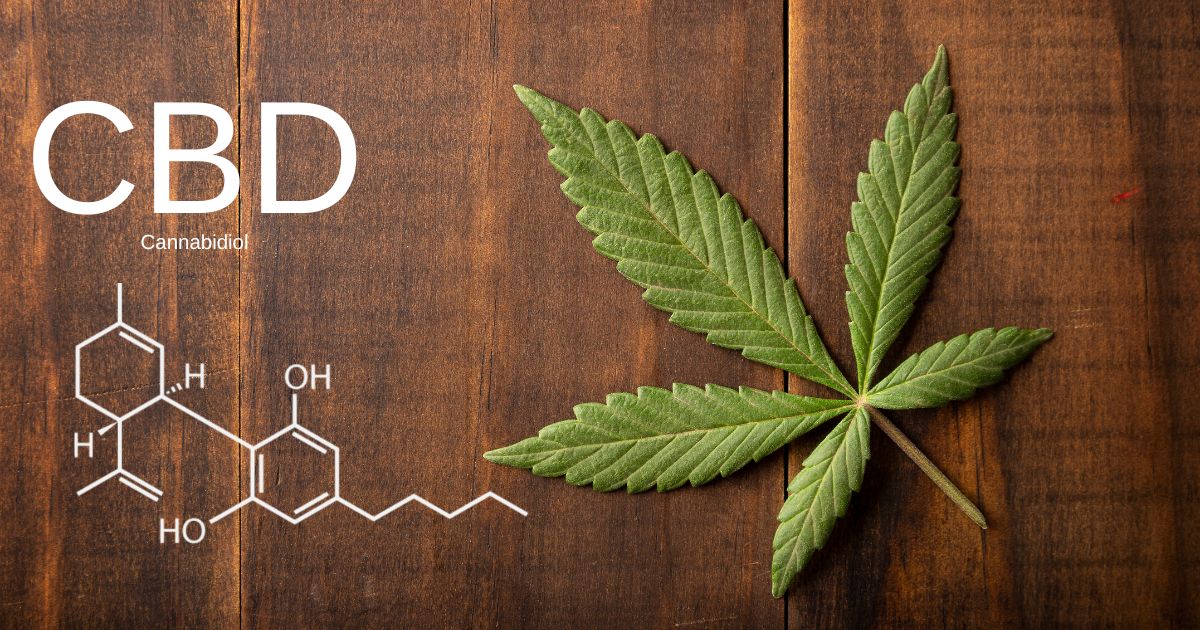CBD is a non-intoxicating cannabinoid and is the second-most abundant cannabinoid found in marijuana plants. While CBD doesn’t produce the strong psychoactive effects of THC, it still has many potential uses.
CBD enjoys much more relaxed regulation than THC regarding its research, production, sale, and use. The FDA removed barriers to researching CBD as early as 2015, and in 2018 hemp (or THC-free cannabis) was made federally legal. According to Harvard Medical School’s Harvard Health Publishing, CBD is reported to assist with various conditions, including anxiety, insomnia, pain management, and substance abuse.
CBD does not only interact with cannabinoid receptors but also non-cannabinoid receptors. The interaction with these receptors suggests CBD has the potential to treat several conditions by producing unique effects such as reducing inflammation, alleviating pain, and decreasing anxiety.
CBD may have the ability to treat inflammation, chronic pain, osteoporosis, arthritis, anxiety, depression, sleep disorders, and potentially cancer through its interaction with both cannabinoid and non-cannabinoid receptors.

Methods of Consumption for CBD
There are a variety of methods for consuming both CBD. To experience the effects of CBD, smoking dried flowers or resin are not the only options. CBD can also be consumed through edibles, tinctures, capsules, powder, and topical creams.
Here are several methods of consuming CBD, including:
- Smoking: The traditional way of consuming CBD is by smoking dried flowers or resin. This method produces a fast onset of effects but can be harsh on the lungs and throat.
- Edibles: CBD can also be consumed through edibles, such as brownies, cookies, and gummies.
- Tinctures: CBD tinctures are liquid extracts placed under the tongue or mixed into food or drinks. This method produces a fast onset of effects and allows for more precise dosing.
- Topicals: CBD topicals are creams, balms, and salves applied directly to the skin. This method is helpful for localized pain and inflammation.
- Vaping: CBD can also be consumed by vaping, which involves inhaling a vaporized oil or liquid. This method produces a fast onset of effects but can harm the lungs.
- Suppositories: CBD can be used in a suppository. A suppository is another way to deliver a drug. It’s a small, round or cone-shaped object that you put in your body, often into your bottom. Once it’s inside, it melts or dissolves and releases its medication.
The Benefits and Drawbacks of CBD
CBD also has many potential medical benefits and is generally considered safe and non-addictive. Here are some of the benefits and drawbacks of CBD:
Benefits of CBD:
- Anxiety Relief: CBD has been shown to reduce anxiety in patients with social anxiety disorder and post-traumatic stress disorder.
- Pain Relief: CBD can help alleviate pain caused by various conditions, including neuropathic pain, arthritis, and multiple sclerosis.
- Anti-Inflammatory: CBD has anti-inflammatory properties, which can help reduce inflammation and swelling associated with conditions such as acne, psoriasis, and arthritis.
- Neuroprotective: CBD has neuroprotective properties, which can help protect the brain from damage caused by conditions such as Alzheimer’s and Parkinson’s.
Drawbacks of CBD:
- Interactions with Medications: CBD can interact with some medications, including blood thinners, and can either increase or decrease their effects.
- Dry Mouth: CBD can cause dry mouth, which can be uncomfortable for some individuals.
- Lack of Regulation: CBD products are not regulated by the FDA, which means that the quality and potency of these products can vary widely.
Understanding the Endocannabinoid System
The endocannabinoid system (ECS) is a complex network of receptors and neurotransmitters that are found throughout the human body. It plays a crucial role in regulating essential bodily functions such as hormone levels, heart rate, and sleep. The ECS works to maintain homeostasis in the body, which is a state of balance and stability that is necessary for optimal health. It accomplishes this by producing and utilizing endocannabinoids, which are similar to cannabinoids found in cannabis but are produced naturally by the body.
A major job of the ECS is homeostasis, which regulates many of your body’s essential functions, including:
- Hormone levels and fertility
- Heart rate
- Body temperature
- Hunger and digestion
- Immune function
- Sleep
- Mood
- Memory and concentration
- Pain
- Motor control
- Awareness of your senses

Your endocannabinoids communicate with your nervous system to keep all these things within acceptable parameters. When you consider that, it makes sense that cannabinoids can treat numerous medical problems.
An important difference between your endocannabinoids and cannabinoids from an outside source, however, is that yours work in precise coordination with only the system that needs correcting at that moment. When you inhale cannabinoids from, say, smoking marijuana, they flood through your whole body and make both desirable and undesirable changes at the same time.
How Cannabinoids Work in the Body
In 1988, Dr. Allyn Howlett and her team of researchers at St. Louis University first discovered the cannabinoid receptor, which is a type of protein found in cells that bind with cannabinoids like those produced naturally by our bodies or from plants such as cannabis.
Cannabinoid receptors were discovered because researchers tried to understand how phytocannabinoids like THC and CBD interact with the body. So they have named cannabinoid receptors after the main chemicals that activate them — cannabinoids.
Scientists later discovered that the body produces very similar molecules that fit the same receptors. They were named endocannabinoids.
Endocannabinoids produced by the body are similar to cannabinoids found in cannabis but are specifically tailored to interact with receptors in the ECS. On the other hand, cannabinoids from an outside source, such as cannabis, can interact with a variety of receptors in the body and produce different effects. For example, inhaling cannabinoids can affect the whole body at once, unlike endocannabinoids which work precisely with specific systems. This is why certain strains of cannabis may have varying effects on the body.
The Endocannabinoid System relies on two main types of receptors, CB1 and CB2, to help regulate physiological functions. CB1 receptors are located mainly in the brain and nervous system, while CB2 receptors are primarily found in immune cells. The main function of both types of receptors is to detect changes in the environment and activate pathways that can restore balance within the body.
CB1 receptors are essential in regulating mood, appetite, memory formation, motor control, coordination, pain perception, sleep patterns, and more. Although they are primarily found in the central nervous system, they can also be present in other organs, such as the liver or kidneys.
On the other hand, CB2 receptors are mainly involved in immune functions and inflammation. They are found in immune cells such as macrophages, B-cells, natural killer cells, and T-cells.
When cannabinoids such as THC or CBD bind to these receptors, they can cause body changes that help restore homeostasis. For example, when THC binds with CB1 receptors, it has been known to increase dopamine levels, reducing anxiety and improving mood.
Similarly, CBD binding with CB2 receptors has been linked to reducing inflammation and pain perception in the body. In short, both receptors play an essential role in maintaining balance within the human body by responding to environmental changes.
- Chicago Police Department Revises Policy on Searches Based Solely on Marijuana Odor
- Ohio’s Senate Bill 56 Postponed, Leaving Details of Issue 2 Still Unresolved
- Sports Stars and Well Known Entertainers Join Forces Calling on Trump for Cannabis Reform
- Pinsky and the Brain: Bill White on His Journey to Consulting in Cannabis
- Delaware’s Recreational Cannabis Market Finally Set to Launch After Years of Challenges
- Excise Tax Increase to 19% and Its Impact on California Retailers














